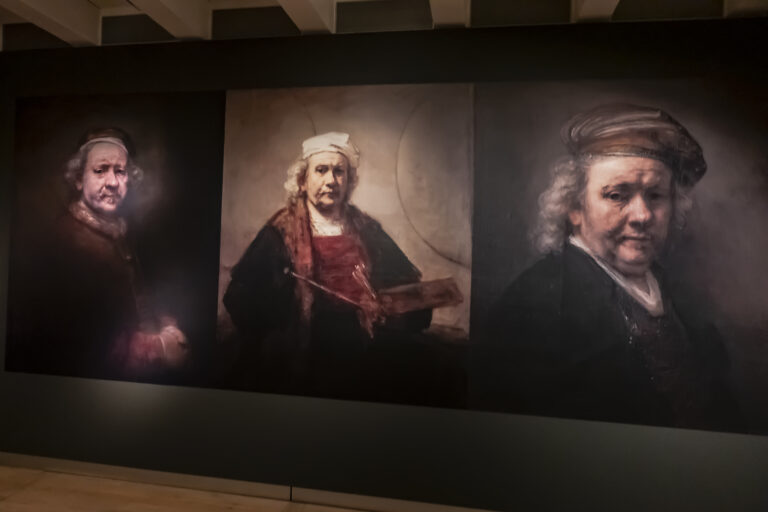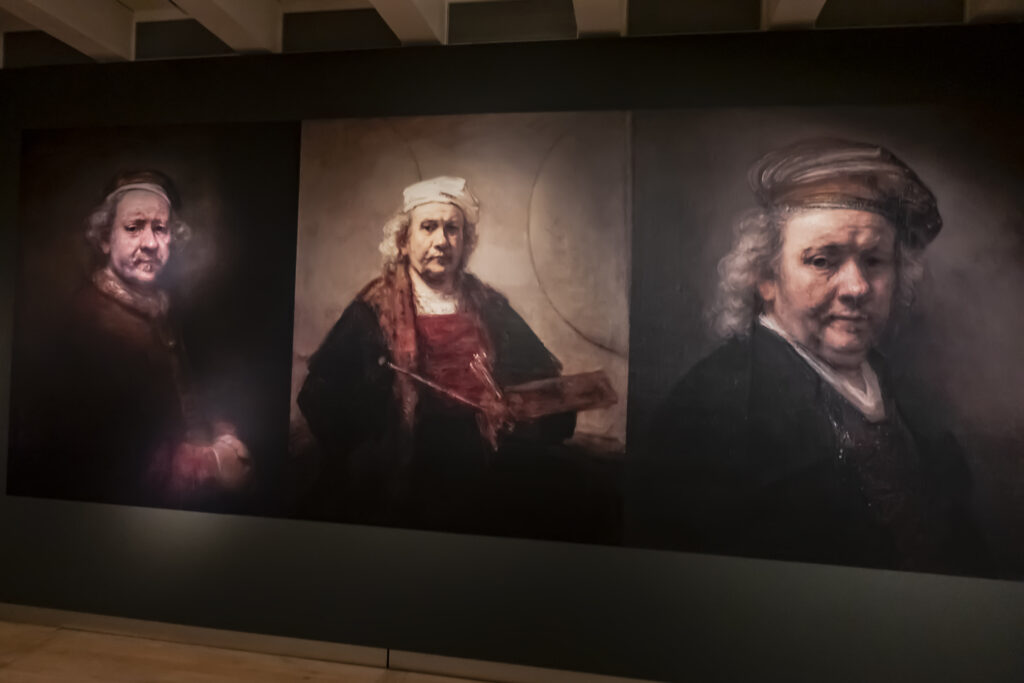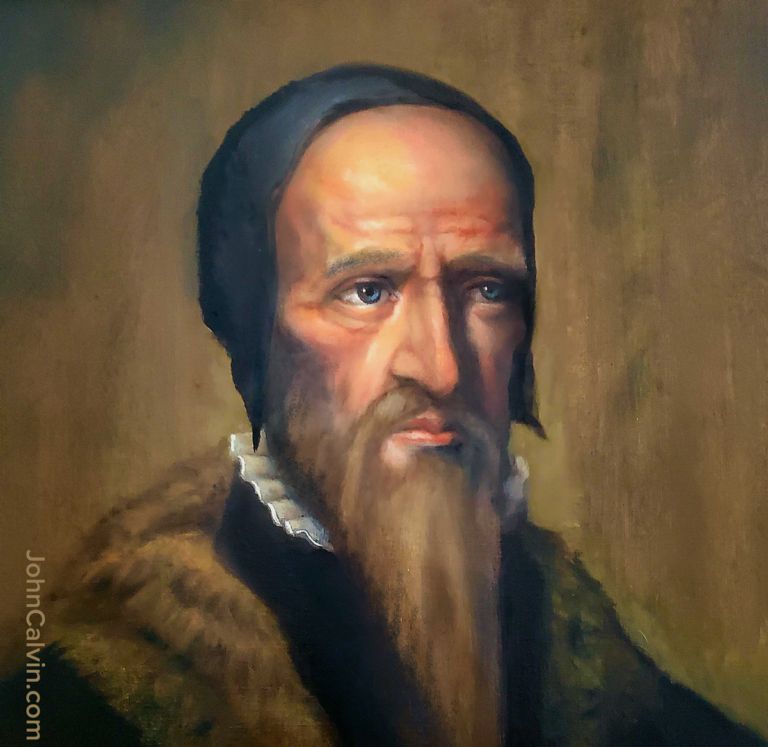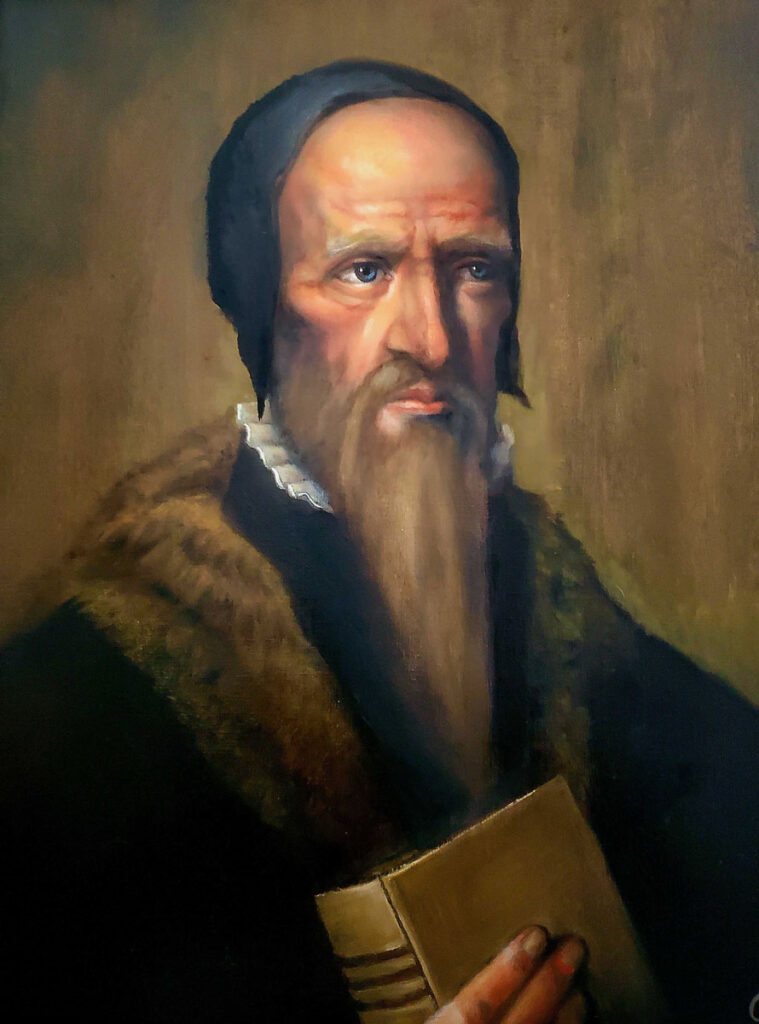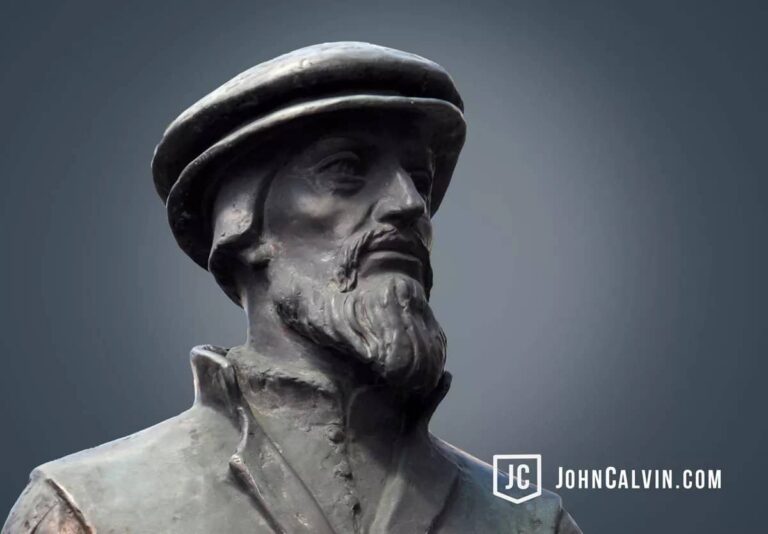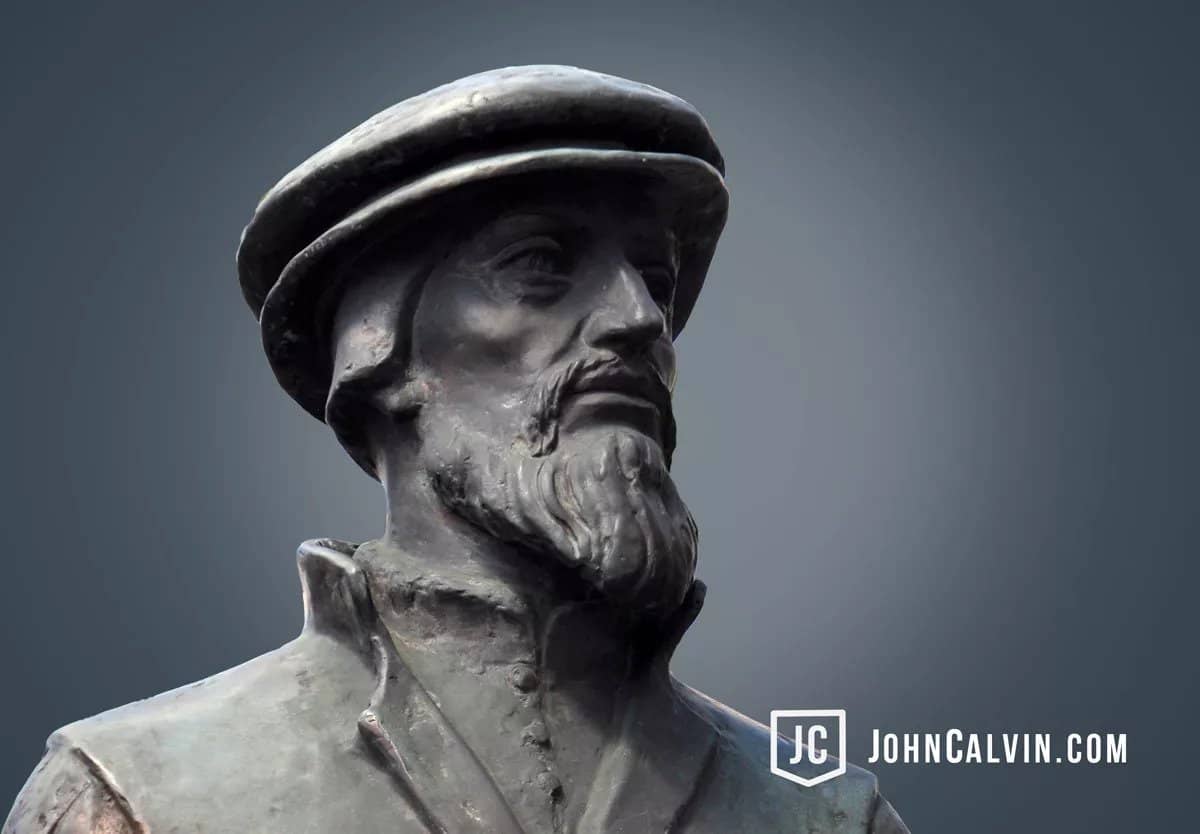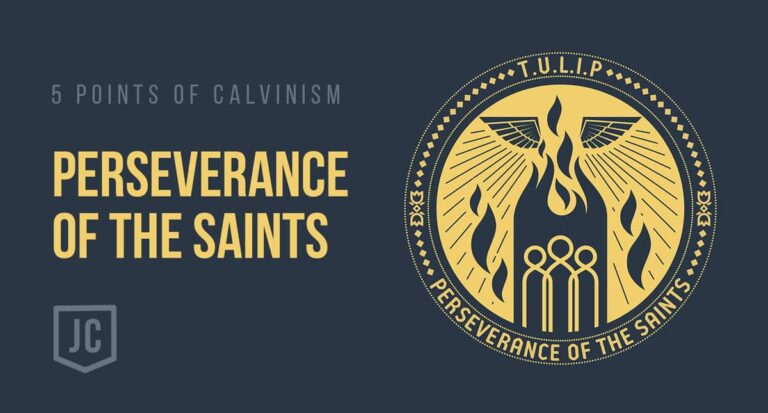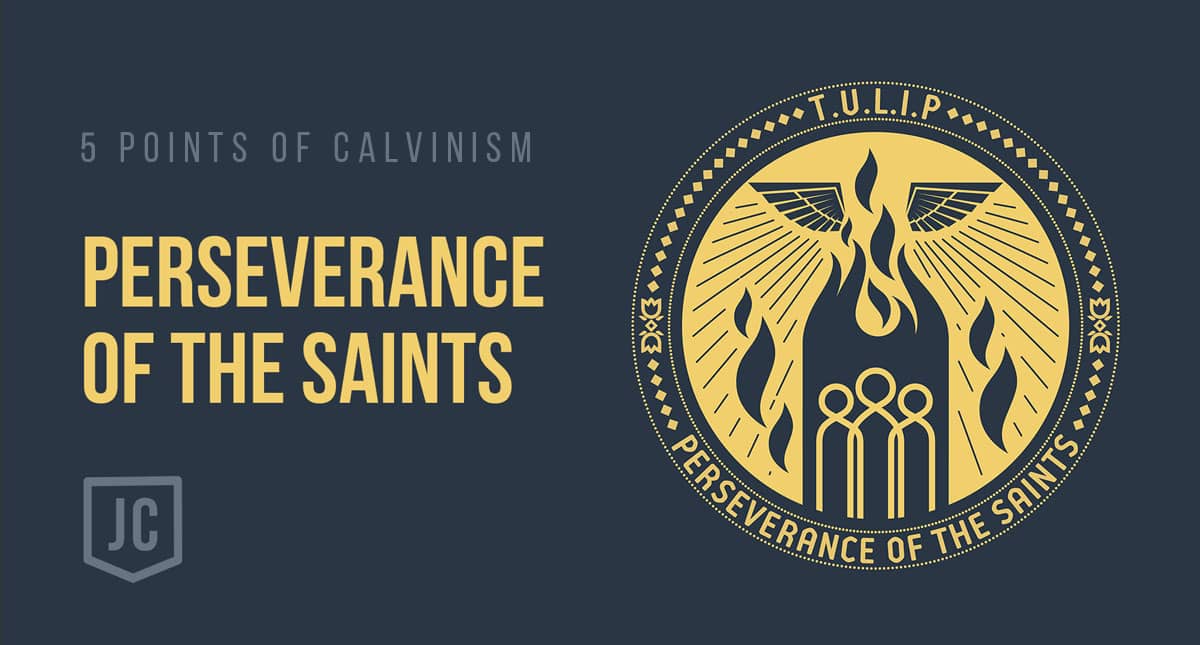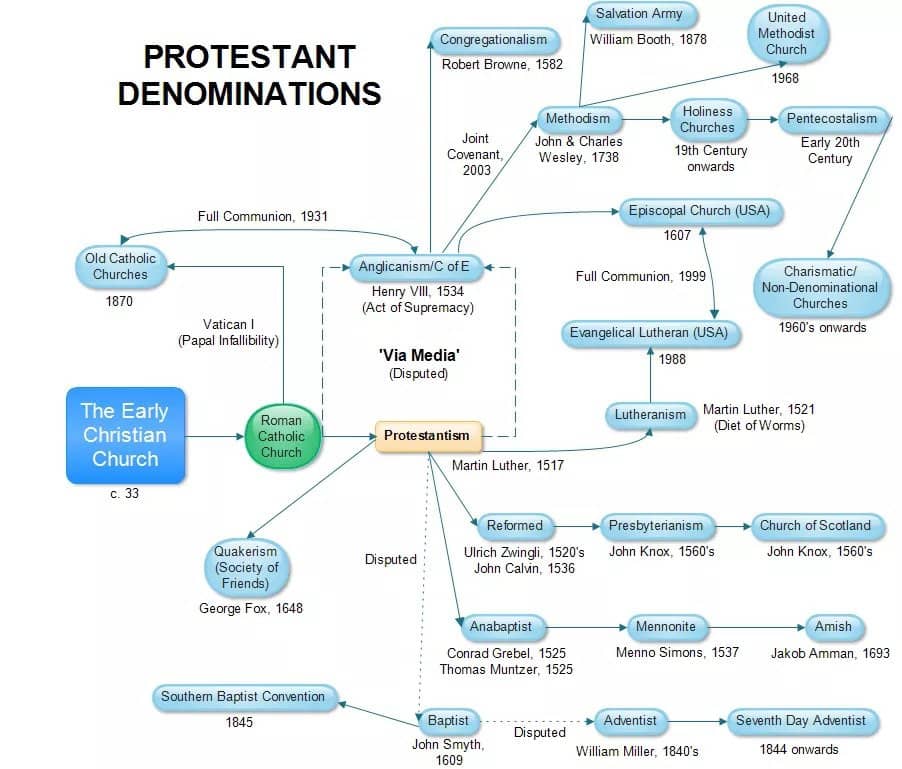What Religious Denomination Was Born Out of the Reformation?
What Religious Denomination was Born Out of the Reformation? | Discover the Thriving Denomination Born from the Reformation
The Protestant Reformation was a significant event in European history that began in the early 16th century. Evidently, it was a time of substantial change in the Christian church, marked by religious and political upheavals that had far-reaching consequences for Europe and the rest of the world. Christians were rejecting the corruption of the Catholic Church and discovering the truth of the scriptures for themselves. The development of the printing press meant the Bible was now being mass-produced in many common languages and available to the average man to read.

During this upheaval, remarkable religious denominations emerged, setting the stage for a new era in Christian worship, beliefs, practices, and traditions. Protestantism encompasses a range of denominations that diverged from the Roman Catholic Church and established their own theological views. Thereupon, the most prominent were Lutheranism, Calvinism (Reformed Church), Anglicanism, Anabaptism, and Presbyterianism.
In this article, we will uncover the answer to the question that has fascinated scholars and believers alike: “What religious denomination was born out of the Reformation?”. We will explore these religious denominations, their historical context, core beliefs, and their influence on other denominations. Read along as we touch on the origins and distinct characteristics of these denominations, so we can better appreciate the diversity of the Christian church and its ongoing impact on society.
Protestantism
During the 16th century, a movement known as the Protestant Reformation arose in Europe, challenging the authority of the Roman Catholic Church. Consequently, Protestant churches emerged as a direct result of this movement, driven by the belief that the Church had drifted away from the true teachings of Christ.
Spearheaded by renowned leaders such as Martin Luther, John Calvin, and Huldrych Zwingli, Protestants sought to reform the Church by returning to the Bible and rejecting conventional Catholic beliefs, establishing several new denominations across the globe.
The core beliefs of Protestantism are based on the “Five Solas,” which are:
- Faith alone
- Grace alone
- Christ alone
- Scripture alone
- Glory to God alone
Protestants believe that believers can be justified by faith alone and that their salvation depends entirely on Christ’s sacrifice on the cross. Furthermore, the Bible is the sole authority for Christian living and rejects the Catholic Church’s teachings advocating the Pope’s infallibility.
They believe Christian worship should be simple and free from the excesses that characterized Catholic worship in the Middle Ages. Likewise, Protestants promote using vernacular languages in worship, enabling believers to understand the Scriptures better. In addition, they typically reject religious icons, statues, stained glass windows, and other symbols.
Protestantism encompasses various denominations, each with distinct beliefs and practices. Some of the most prominent Protestant denominations include Lutheranism, Calvinism, Anglicanism, and Presbyterianism. Still, all adhere to the core tenets of Protestantism. Today, Protestantism remains a diverse and rapidly growing Christian movement, with millions of followers across the globe.

What religious denomination was born out of the Reformation? | Lutheranism
Lutheranism finds its roots in the teachings of Martin Luther, the renowned German theologian and reformer. Luther’s courageous actions, including his posting of the 95 Theses in 1517, catalyzed religious transformation during the Reformation.
Beliefs:
- Justification by faith alone. Salvation is a gift of God’s grace. It can be received through faith in Jesus Christ alone rather than through human effort or good works.
- Authority of Scripture. The Bible is the ultimate source of divine revelation and guidance for faith and life. Moreover, they believe in the priesthood of all believers, affirming that every individual has direct access to God and can interpret Scripture for themselves.
- Sacramental theology. Baptism is viewed as a means of grace through which individuals are united with Christ and incorporated into the community of believers. Likewise, the Lord’s Supper is seen as a sacred meal where the true presence of Christ is spiritually received.
Figures:
- Martin Luther. The pivotal figure of the Reformation, his courageous actions and theological writings laid the foundation for Lutheranism.
- Philipp Melanchthon. A close collaborator of Luther, he played a crucial role in systematizing and promoting Lutheran theology, particularly through his contributions to the Augsburg Confession.
- Johannes Bugenhagen, Justus Jonas, and Nicholas von Amsdorf
Highlights:
- The Augsburg Confession, presented in 1530, serves as a key doctrinal statement for Lutheranism, outlining its beliefs and principles.
- Lutheranism experienced significant growth and establishment as state churches in various countries, including Germany, Scandinavia, and Eastern Europe.
Today, Lutheranism remains a vibrant and diverse denomination, with various Lutheran church bodies and traditions across different regions. The Evangelical Lutheran Church in America (ELCA) and the Lutheran Church-Missouri Synod (LCMS) are prominent examples in the United States, while the Lutheran World Federation (LWF) serves as a global communion bringing together Lutheran churches from around the world. Evidently, its commitment to grace, faith, and the centrality of Scripture resonates with millions of believers, inspiring worship, service, and engagement with the wider community.
What religious denomination was born out of the Reformation? | Calvinism
Calvinism, also known as Reformed theology, was developed from the teachings of John Calvin, a French theologian, pastor, and reformer who was a key figure during the Protestant Reformation.
Beliefs:
- Predestination. God has already predestined who will and will not be saved. Hence, the elects are chosen by God’s grace alone and not by anything they have done or could do. This belief is based on the biblical teachings of Romans 8:29-30, Ephesians 1:4-11, and Acts 13:48.
- Sovereignty of God. God is in control of everything, including human actions and decisions. Thus, nothing happens outside God’s control; everything is part of God’s greater plan. This belief is based on the biblical teachings of Psalm 135:6, Isaiah 46:9-10, and Job 42:2.
- Total Depravity. Calvinists assert that humans are born sinful and incapable of saving themselves.
- Authority of scripture. The Bible is inerrant and infallible, without error or mistakes. Further, it is the ultimate authority for all matters of faith and practice. This belief is based on the biblical teachings of 2 Timothy 3:16-17, Psalm 19:7-9, and John 17:17.
- The Five Points of Calvinism. Summarized in the acronym TULIP (Total Depravity, Unconditional Election, Limited Atonement, Irresistible Grace, Perseverance of the Saints), outline key theological tenets of Calvinist belief.
Figures:
- John Calvin. The namesake and a key figure of Calvinism, whose writings and teachings laid the foundation for the development of Reformed theology.
- Theodore Beza. A prominent successor of Calvin, he further developed and expanded Calvinist doctrines, solidifying their influence within the movement.
Highlights:
- Calvinism emerged in the mid-16th century in Geneva, Switzerland, significantly impacted the Reformation, particularly in Switzerland, France, Scotland, and the Netherlands, and quickly gained traction throughout Europe.
- Calvinism influenced the formation of many other Protestant denominations, including Presbyterianism, Congregationalism, and the Dutch Reformed Church. Moreover, it played a role in shaping the political landscape of Europe, with Calvinist leaders promoting the idea of a theocratic state.
- Calvinist teachings profoundly impacted various aspects of society, including ethics, education, and governance, particularly in regions strongly influenced by Reformed theology.
- One example of Calvinism’s influence on other denominations is the Puritan movement in England. The Puritans were a group of Protestants who sought to purify the Church of England from Catholic practices and beliefs. Accordingly, Calvinism heavily influenced them and significantly impacted American culture and politics.
Calvinism continues to have a significant presence worldwide, with Reformed and Presbyterian churches embodying its teachings and theological distinctiveness. Its enduring legacy prompts us to ponder the complex interplay between divine sovereignty and human responsibility. Likewise, it invites us to engage in deep theological reflection.
What religious denomination was born out of the Reformation? | Anglicanism
The Church of England’s split from the Roman Catholic Church led to the formation of Anglicanism. However, Anglicanism represents a unique blend of Protestant and Catholic elements, which values tradition and the importance of the church community. It has influenced other denominations, such as the Episcopal Church in the United States and the Anglican Church of Canada.
Beliefs:
- Scripture and Tradition. Anglicans uphold the authority of Scripture while recognizing the significance of tradition, particularly the teachings of the early Church Fathers and the Book of Common Prayer.
- The Threefold Order of Ministry. They maintain a threefold order of ministry comprising bishops, priests, and deacons, tracing its roots back to the early Christian Church.
- Via Media. Anglicanism embraces a “middle way” approach. Thus, they balance Protestant principles with Catholic traditions, aiming to maintain continuity with the historic Christian faith.
Figures:
- Thomas Cranmer. As Archbishop of Canterbury, he played a pivotal role in shaping the early stages of Anglicanism. Accordingly, his work on the Book of Common Prayer and liturgical reforms greatly influenced Anglican worship and theology.
- Elizabeth I. Queen Elizabeth I’s reign was a defining period for Anglicanism. She established a religious settlement that accommodated both Protestant and Catholic sensibilities, solidifying Anglicanism as the established church in England.
Highlights:
- Anglicanism originated in the 16th century during the English Church Reformation, primarily as a response to the religious and political landscape of the time.
- The Book of Common Prayer, first published in 1549, serves as a cornerstone of Anglican liturgy and worship, encapsulating Anglican theology and practice.
- The Anglican Communion is a global fellowship of autonomous churches that share a common heritage and are connected to the Archbishop of Canterbury.
Anglicanism continues to evolve and engage with contemporary issues, embracing diversity and fostering dialogue among its members. In addition, they are actively involved in social justice initiatives, ecumenical dialogue, and the pursuit of unity amidst theological diversity.
What religious denomination was born out of the Reformation? | Anabaptism
Anabaptism brings a unique perspective that sets it apart from other denominations of the time. The movement influenced other denominations, such as the Mennonite and Amish communities, who practiced similar beliefs and customs.
Beliefs:
- Believer’s Baptism. Anabaptists advocated for adult baptism, considering it a personal, voluntary expression of faith rather than an infant baptism tied to societal or political structures.
- Separation of Church and State. They promoted the idea of a voluntary church, separate from the control and influence of the state. Moreover, they emphasize the individual’s commitment to follow Christ in all aspects of life.
- Nonviolence and Pacifism. They rejected violence, adhering to a commitment to nonviolence and the teachings of Jesus to love their enemies.
Figures:
- Conrad Grebel: Considered one of the key founders of Anabaptism. Accordingly, he played a crucial role in establishing the religious movement in Switzerland.
- Menno Simons: After whom the Mennonite tradition is named, Simons provided significant leadership and theological guidance to the Anabaptist movement. Likewise, his writings and teachings influenced the development of Anabaptist theology.
Highlights:
- Anabaptism emerged in the early years of the Reformation, primarily in Switzerland, Germany, and the Netherlands. Thereupon, it was distinguished by its emphasis on personal faith and discipleship, challenging the prevailing religious and societal norms of the time.
- They faced severe persecution from Catholic and Protestant authorities, as their beliefs and practices threatened the existing religious and political order.
- The movement splintered into various branches, such as the Mennonites, Hutterites, and Amish, each with distinct practices and interpretations of Anabaptist theology.
Anabaptism is a testament to the power of conviction and the pursuit of a faith grounded in personal commitment and communal accountability. Its story serves as a reminder that the Reformation was not a singular event but a complex movement that birthed a diverse array of denominations, each contributing to the rich tapestry of Christian history.
What religious denomination was born out of the Reformation? | Presbyterianism
Presbyterianism’s development can be traced back to the teachings of John Calvin and the Reformed tradition. Their influence can be seen in other denominations, such as the Congregationalists and some branches of the Anglican Church. The Presbyterian Church has significantly impacted the development of democracy, particularly in Scotland and the United States.
Beliefs:
- Governance by Elders. Presbyterianism is characterized by a system of church governance led by elders, elected representatives responsible for making decisions and guiding the local congregation.
- Reformed Theology. They adhere to the principles of Reformed theology, emphasizing God’s sovereignty, the authority of Scripture, and the doctrines of grace.
- Connectionalism. Presbyterianism fosters a sense of connection and interdependence among churches, with higher governing bodies providing oversight and coordination among congregations.
Figures:
- John Knox: Considered the founder of Presbyterianism, a Scottish theologian, and reformer who played a key role in shaping the movement in Scotland.
- John Calvin: While primarily associated with Calvinism, his teachings and influence significantly impacted the development of Presbyterianism, particularly in Scotland and other regions.
Highlights:
- Presbyterianism emerged in the 16th century, particularly in Scotland and Switzerland, as a response to the reforms initiated by Martin Luther and John Calvin.
- The Westminster Confession of Faith and other confessional documents are central theological standards for many Presbyterian churches, outlining their beliefs and practices.
- Presbyterianism’s commitment to education and scholarship has led to the establishment of numerous renowned theological seminaries and educational institutions.
Today, Presbyterianism is a global movement encompassing various Presbyterian and Reformed denominations worldwide. While diverse in practices and cultural expressions, these churches share a common commitment and a sense of connection and mutual accountability.
Conclusion
We have explored the captivating journey of the religious denomination born from the Reformation as we’ve discovered the answer to the question, “What religious denomination was born out of the Reformation?”. These denominations, collectively known as Protestantism, reshaped Europe’s religious, cultural, and political landscape, breaking the Catholic Church’s monopoly, the only church in Western Europe during that time, emphasizing individual faith and direct access to the Scriptures.
The impact of the Reformation extended far beyond religious realms. Moreover, it influenced the formation of nation-states and the pursuit of religious tolerance. As we reflect on the enduring significance of the Reformation and its denominational outcomes, it is crucial to recognize the rich diversity within Protestantism. Whereas each sect holds its theological nuances and contributions to the wider Christian faith.
Understanding the denominational landscape of the Reformation provides valuable insights into modern Christianity and fosters interdenominational dialogue. Indeed, by understanding the historical roots of our beliefs, we can cultivate greater understanding, respect, and unity among believers.
In the words of Martin Luther, “Peace, if possible, truth at all costs”. Thus, let us embrace this call by engaging in meaningful conversations, bridging divides, and appreciating the richness of our diverse Christian heritage. By pursuing a deeper understanding of our faith and its relevance today, we can strive for peace and truth in a world that needs it more than ever.

